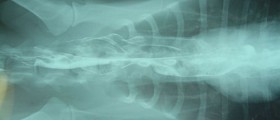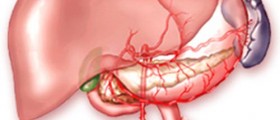
Myasthenia gravis is an autoimmune disease which features with weakness and rapid weariness of the muscles. The disease develops as a result of improper neurotransmission between nerves. Myasthenia usually affects women under the age of 40 and men older than 40. Unfortunately there is no definitive cure for myastenia gravis. However there are numerous treatment options which may reduce the intensity of symptoms and signs of the disease as well as improve patient's quality of life. No matter which form of therapy is conducted the goal is to reduce various difficulties such as double vision, drooping of eyelids, problems with speech, chewing, swallowing and breathing.
Symptoms of myastenia gravis develop as a result of weakness of the muscles. This means that if a muscle is used more often the degree of weakness increases. During the rest muscles tend to recover and regain strength. Even though each and every muscle can be affected by the disease certain groups of muscles have higher tendency of being afflicted. These includes muscles of the eyes, facial and throat muscles. Muscles of extremities are affected equally.
The treatment includes medications and surgery. In rare cases plasmapheresis and intravenous immunoglobulines may be applied. Even the combination of the mentioned modalities is possible. A doctor may start with one treatment modality and shift to another one.
Medications which are regularly prescribed for myasthenia gravis are cholinesterase inhibitors (neostigmine). These drugs improve neurotransmission hence enhance muscle contraction and strength. Corticosteroids are powerful in inhibition of antibodies' production which is responsible for the disease. However the usage of these medications can lead to serious side effects. This means they have to be administered under careful supervision and constant monitoring. Immunosupressants such as azathioprine or Cyclosporine are mighty because they tend to reduce the activity of immune system.
Plasmapheresis is a process of elimination of antibodies from the body. The procedure is similar to dialysis. The goal of this treatment is to remove all the antibodies which affects neurotransmission. The effects of plasmapheresis lasts no longer than a few weeks. Immunoglubulines may be applied intravenously. These are responsible for alterations in response of immune system. In this case the patients are relieved for a period of few months.
And finally 15% of all patients have a tumor present in the thymus, a gland which is located in the chest. The role of this gland is connected to immune system. These patients undergo the thymus removal. Others with no presence of tumor are not subjected to operation.

















Your thoughts on this
Loading...